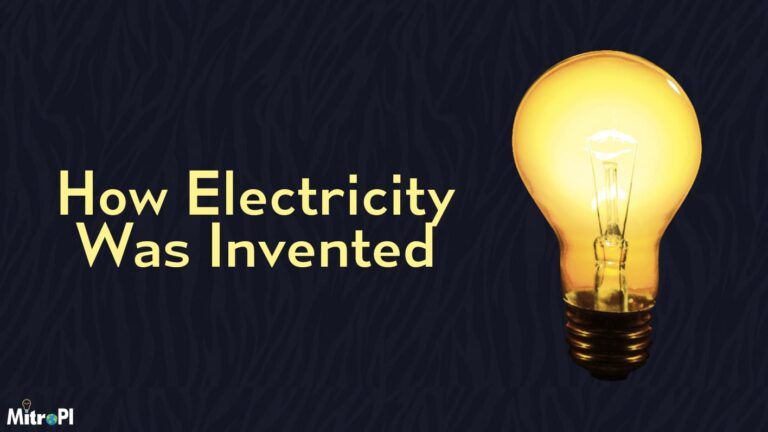
Owning a home is a cherished dream for millions of Indians, and home loans have become a vital financial tool to turn this dream into reality. With a plethora of banks and financial institutions offering competitive home loan products, choosing the right one can be overwhelming. Factors such as interest rates, loan tenure, and Equated Monthly Installments (EMIs) play a crucial role in determining affordability and long-term financial planning. This blog post dives deep into the world of home loans in India, highlighting the best banks, current interest rates, and how EMI calculators can simplify your decision-making process. Whether you’re a first-time homebuyer or looking to refinance, this guide will equip you with the knowledge to make an informed choice.
Understanding Home Loans in India
A home loan is a secured loan provided by banks or housing finance companies (HFCs) to help individuals purchase, construct, or renovate a residential property. The property itself serves as collateral, ensuring security for the lender. Home loans in India come with a variety of features, including fixed or floating interest rates, flexible tenures (up to 30 years), and tax benefits under the Indian Income Tax Act, 1961. Borrowers repay the loan through EMIs, which consist of both principal and interest components.
The Reserve Bank of India (RBI) plays a pivotal role in shaping home loan interest rates through its monetary policies, such as adjustments to the repo rate. As of March 30, 2025, the lending landscape has evolved with competitive offerings from both public and private sector banks, making it an opportune time for prospective borrowers to explore their options.
Best Banks for Home Loans in India (2025)
The Indian banking sector is divided into public sector banks (PSBs) and private sector banks, each offering distinct advantages. Public sector banks typically provide lower interest rates and greater trust, while private banks emphasize faster processing and customer service. Below is a curated list of some of the best banks for home loans in India as of March 2025, based on interest rates, customer feedback, and loan features.
1. State Bank of India (SBI)
- Interest Rate: 8.25% – 9.45% p.a.
- Key Features: SBI is India’s largest public sector bank and a trusted name for home loans. It offers up to 90% of the property value as a loan, flexible repayment options, and special schemes like SBI Flexipay for young salaried individuals.
- Why Choose SBI?: Competitive rates, extensive branch network, and pre-approved projects make it a top choice.
2. Union Bank of India
- Interest Rate: 8.10% – 9.00% p.a.
- Key Features: Known for offering some of the lowest interest rates, Union Bank provides concessions for women borrowers (0.05% lower rates) and simplified documentation.
- Why Choose Union Bank?: Affordable EMIs and borrower-friendly policies.
3. Bank of Baroda (BoB)
- Interest Rate: 8.15% – 9.50% p.a.
- Key Features: BoB offers instant approval, low processing fees, and a user-friendly EMI calculator to plan repayments.
- Why Choose BoB?: Transparency and competitive rates for diverse customer profiles.
4. HDFC Bank
- Interest Rate: 8.70% – 9.50% p.a.
- Key Features: As a leading private sector player, HDFC Bank provides quick disbursals, top-up loan options, and flexible tenures up to 30 years.
- Why Choose HDFC?: Excellent customer service and a robust online application process.
5. ICICI Bank
- Interest Rate: 8.65% – 9.40% p.a.
- Key Features: ICICI offers attractive rates, tax-saving calculators, and adjustable EMIs based on income growth.
- Why Choose ICICI?: Ideal for tech-savvy borrowers with seamless digital tools.
6. Axis Bank
- Interest Rate: 8.65% – 9.30% p.a.
- Key Features: Axis Bank provides loans starting at ₹3 lakh, with detailed amortization schedules via its EMI calculator.
- Why Choose Axis?: Tailored solutions and competitive rates for urban buyers.
7. Central Bank of India
- Interest Rate: 8.10% – 8.90% p.a.
- Key Features: One of the cheapest options, Central Bank offers loans with minimal processing fees and a focus on affordability.
- Why Choose Central Bank?: Low-cost financing for budget-conscious borrowers.
Interest Rates: A Comparative Overview
Interest rates are a critical factor in determining the cost of a home loan. As of March 30, 2025, rates vary based on the RBI’s repo rate (recently adjusted to 6.25% following a 25 bps cut), borrower credit profiles, and lender policies. Here’s a table summarizing the current interest rates and sample EMIs for a ₹50 lakh loan over 20 years:
| Bank | Interest Rate (p.a.) | EMI (₹) | Total Interest Paid (₹) |
|---|---|---|---|
| Union Bank of India | 8.10% | 42,134 | 51,12,160 |
| Central Bank of India | 8.10% | 42,134 | 51,12,160 |
| Bank of Baroda | 8.15% | 42,290 | 51,49,600 |
| SBI | 8.25% | 42,603 | 52,24,720 |
| ICICI Bank | 8.65% | 43,766 | 55,03,840 |
| Axis Bank | 8.65% | 43,766 | 55,03,840 |
| HDFC Bank | 8.70% | 43,923 | 55,41,520 |
Notes:
- EMIs are calculated using the standard formula: EMI = [P × R × (1+R)^N] / [(1+R)^N – 1], where P = principal, R = monthly interest rate, N = tenure in months.
- Total interest paid assumes no prepayments or rate changes.
Public sector banks like Union Bank and Central Bank lead with the lowest rates, while private banks like HDFC and ICICI offer slightly higher rates but compensate with faster processing and additional features.
Types of Interest Rates
Home loans in India come with two primary interest rate options:
- Fixed Interest Rate: Remains constant throughout the loan tenure, offering predictability. Ideal for borrowers who prefer stable EMIs despite potential market fluctuations.
- Floating Interest Rate: Linked to external benchmarks like the RBI repo rate or MCLR (Marginal Cost of Funds-based Lending Rate). Rates fluctuate, potentially lowering EMIs when rates drop but increasing them during hikes.
Some banks also offer hybrid loans, starting with a fixed rate for an initial period before switching to floating rates. Your choice depends on your risk appetite and financial planning horizon.
EMI Calculators: Your Financial Planning Ally
An EMI calculator is an indispensable tool for home loan borrowers. It helps you estimate monthly payments, total interest payable, and the overall cost of the loan by inputting three key variables:
- Loan Amount (Principal): The amount you borrow.
- Interest Rate: The annual rate charged by the lender.
- Tenure: The repayment period in months or years.
How to Use an EMI Calculator
- Visit the bank’s website (e.g., SBI, ICICI, or HDFC) or a financial portal like BankBazaar or Paisabazaar.
- Enter the loan amount (e.g., ₹50 lakh).
- Input the interest rate (e.g., 8.10% p.a.).
- Select the tenure (e.g., 20 years or 240 months).
- Click “Calculate” to get instant results, including EMI, total interest, and amortization details.
Benefits of EMI Calculators
- Accuracy: Eliminates manual calculation errors.
- Time-Saving: Provides instant results without complex math.
- Customization: Adjust variables to find an EMI that fits your budget.
- Transparency: Breaks down principal and interest components.
For example, using ICICI Bank’s EMI calculator for a ₹50 lakh loan at 8.65% over 20 years yields an EMI of ₹43,766, with total interest of ₹55,03,840. Adjusting the tenure to 15 years increases the EMI to ₹49,733 but reduces total interest to ₹39,51,940—demonstrating how tenure impacts cost.
Factors Influencing Home Loan Decisions
Before choosing a bank or loan product, consider these factors:
- Credit Score: A score above 750 often secures lower rates.
- Income & Employment: Stable income and reputed employers enhance eligibility.
- Loan-to-Value (LTV) Ratio: Most banks finance 75%-90% of the property value; a higher down payment reduces interest costs.
- Tenure: Longer tenures lower EMIs but increase total interest; shorter tenures save on interest but raise monthly outflows.
- Processing Fees: Vary from 0.25% to 1% of the loan amount—compare across banks.
Conclusion
Home loans in India are more accessible than ever, thanks to competitive interest rates and innovative tools like EMI calculators. As of March 30, 2025, public sector banks like Union Bank of India and Central Bank of India offer the lowest rates starting at 8.10% p.a., making them ideal for cost-conscious borrowers. Private banks like HDFC and ICICI, starting at 8.65%-8.70%, cater to those prioritizing service and flexibility. By leveraging EMI calculators, you can tailor your loan to your financial capacity, ensuring a stress-free homeownership journey.
The key to a smart home loan decision lies in comparing rates, understanding your repayment capacity, and aligning the loan with your long-term goals. Start by exploring options from the banks listed above, use their EMI calculators, and consult with representatives to finalize the best deal for your dream home.
FAQs
1. What is the lowest home loan interest rate in India in 2025?
As of March 30, 2025, Union Bank of India and Central Bank of India offer the lowest rates at 8.10% p.a., subject to borrower eligibility.
2. How can I reduce my home loan EMI?
Opt for a longer tenure, negotiate a lower interest rate, or make a larger down payment to reduce the principal amount.
3. Are floating rates better than fixed rates?
Floating rates can save money if market rates drop (e.g., post-RBI’s recent repo cut), but fixed rates offer stability against rate hikes. Choose based on your risk tolerance.
4. How accurate are EMI calculators?
EMI calculators provide precise estimates based on inputs, though final EMIs may vary slightly due to processing fees or rate adjustments at disbursement.
5. Can I switch banks for a lower rate?
Yes, you can transfer your home loan balance to another bank via a balance transfer option, often incurring a small fee but potentially saving on interest.
Sources
- Official websites of SBI, Union Bank of India, Bank of Baroda, HDFC Bank, ICICI Bank, Axis Bank, and Central Bank of India (accessed March 30, 2025).
- RBI Monetary Policy Updates (repo rate data).
- Financial portals like BankBazaar, Paisabazaar, and ClearTax for rate comparisons.
- General knowledge of EMI calculation formulas and banking practices in India.




